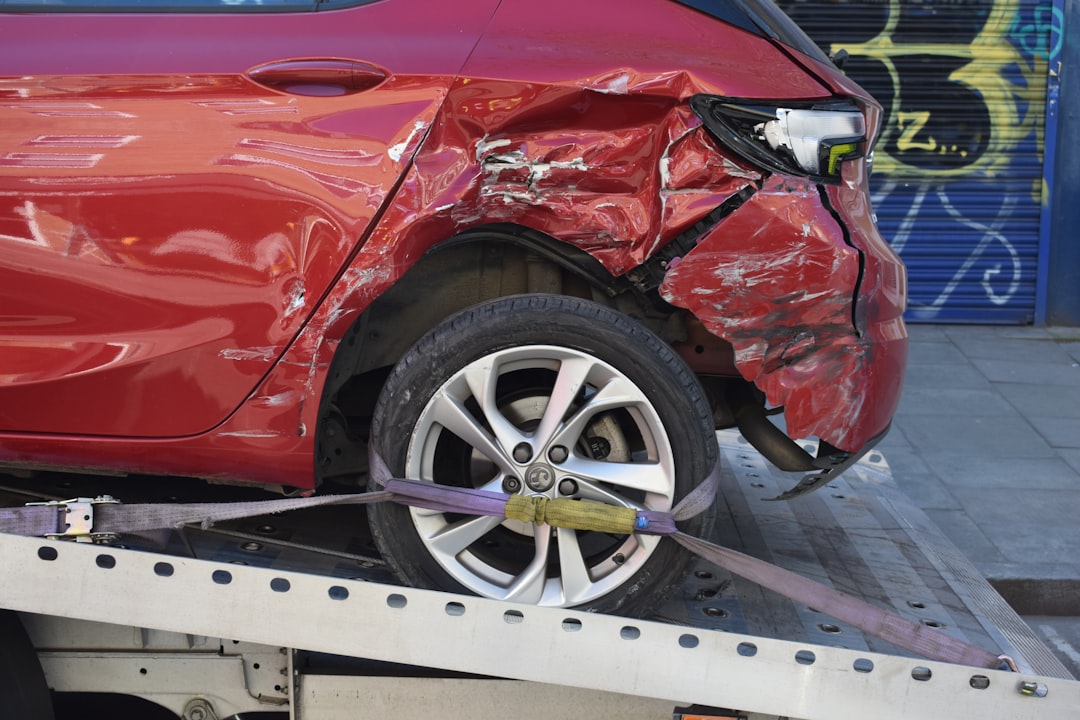

Engage prospects with a scan and streamline customer engagement with FREE QR code marketing tools by Sona – no strings attached!
Create a Free QR CodeFree consultation

No commitment

Engage prospects with a scan and streamline customer engagement with FREE QR code marketing tools by Sona – no strings attached!
Create a Free QR CodeFree consultation

No commitment
QR codes have evolved from a novelty to a strategic powerhouse in bridging offline engagement with online action for liability insurance providers. They now serve as reliable connectors between physical materials and digital experiences, helping teams educate customers, capture high-intent signals, and simplify the path to quoting or support. Since scanners do not require any special app, QR codes meet modern expectations for speed, transparency, and convenience.
The competitive landscape for liability insurance providers is shifting as customers demand more transparency, instant access to information, and seamless digital experiences. Missing high-value prospects who research insurance without leaving their details is a persistent frustration, often compounded by a lack of visibility into who is interacting with offline assets. QR codes enable new education opportunities, surface engagement signals, and power measurable campaigns across both digital and traditional channels, helping providers close that gap.
By embedding QR codes across print materials, digital communications, and in-person events, insurance marketers can amplify their reach and offer customers a frictionless path to policy details, claim resources, and online liability insurance quotes. This guide explores actionable strategies for leveraging QR codes to unlock education, engagement, and measurable ROI, along with solutions for common industry challenges.

Customer education remains challenging in liability insurance, especially when traditional materials cannot adapt to individual needs and offline interest signals often go untracked. QR codes bridge the gap between physical touchpoints and digital outcomes, allowing prospects to explore policy types, limits, exclusions, endorsements, and pricing models in real time. When someone scans a code on a mailer or trade show flyer, you can present interactive explainers, calculators, and FAQs while capturing engagement data that informs follow-up and content optimization.
The key is to design QR-enabled experiences that map directly to the questions buyers ask at each stage. Instead of static brochures and generic PDFs, use codes that deliver modular, personalized content. Replace paper forms and phone queues with pre-filled digital flows that accelerate quoting, simplify claims support, and reduce friction. The result is a more informed customer who is less likely to churn during research and more likely to request a quote or schedule a consultation.
Transitioning from static brochures and paper applications to QR-led digital journeys saves time and reduces errors. It also lets you personalize every interaction. With a centralized QR management platform like Sona QR, you can update destinations without reprinting, test different calls to action, and refine educational flows based on real user behavior instead of guesswork. Over time, your library of QR-enabled assets becomes a performance engine that guides prospects from curiosity to confidence.

Liability insurance providers face a persistent disconnect between offline awareness and digital conversion. Prospects often engage with printed materials at events, in offices, or through direct mail, but those moments rarely produce measurable signals unless the person visits a website or calls a number. QR codes solve this problem by letting people take action instantly from any printed or physical touchpoint. Scans can open policy comparison tools, pre-filled quote forms, claim resources, or live chat, all while recording engagement data that informs marketing and sales.
Speed and simplicity are also essential. Few people want to download an app or key in a long URL to learn whether they need professional liability or cyber coverage. A well-placed QR code creates a one-scan path to answers, pricing guidance, or next steps. When paired with dynamic content, codes allow teams to keep materials up to date without reprinting, which reduces waste and confusion when policies change or underwriting criteria evolve.
Consider a simple example. A trade show badge with a QR code linking to a policy comparison tool captures intent at the moment of interest. By tagging the code to the event and booth location, marketers can retarget scanners with tailored content and follow up with participants who viewed specific coverage pages. That visibility helps teams allocate budget to the events and messages that work best.

QR codes for liability insurance providers should align with the actions customers want to take. The format you choose shapes the experience users encounter after scanning, which in turn affects engagement and conversion. For most providers, a mix of web links, vCards, and forms delivers the strongest results across education, quoting, and service.
With dynamic QR codes, marketers can change destinations without reprinting and segment analytics by campaign, location, or audience. For example, a code printed on a small business mailer for restaurants can initially link to a general liability guide, then later route scanners in specific zip codes to a local agent’s booking page during renewal season. This flexibility reduces waste and keeps your content strategy responsive.

Liability insurance providers succeed when they place QR codes in environments where prospects already encounter important decisions. The best opportunities are high-traffic or high-intent touchpoints where a scan can shorten the path to education, quoting, or service. By turning each offline interaction into a measurable digital visit, you gather insights that refine your campaigns and improve outcomes over time.
Think beyond obvious placements to moments where context and timing increase relevance. For instance, a QR code on a business banking partner’s statement stuffer can promote professional liability to new LLCs. A waiting room poster can educate clients on cyber coverage risks. A conference badge can tag industry-specific interests for smarter follow-up.
These placements unify your offline efforts with your digital funnel. They also reveal which channels and creative assets perform best, so you can reallocate budget to proven winners.

The liability insurance journey includes moments of discovery, evaluation, purchase, and service. QR codes enhance each stage by providing instant access to the most relevant action or resource. Use them to replace analog steps, reduce confusion, and keep prospects moving forward.
Start with clear goals for each use case. If your objective is to educate, link to content that answers specific questions. If your objective is lead capture, route to a short, mobile-friendly form. Then measure performance, test variants, and scale what works.
Deploying QR codes at these moments ensures both prospects and clients receive timely information and streamlined next steps. It also creates a consistent experience where every physical asset becomes part of a measurable journey.
Every scan provides context that can inform your retargeting and nurture strategy. By deploying unique QR codes across touchpoints, you can segment audiences by location, channel, content interest, and buying stage. These signals help you deliver personalized follow-up that respects time and intent.
Begin by mapping your funnel and assigning codes to each stage. Awareness codes live on event signage and upper-funnel mailers. Consideration codes appear on brochures with coverage comparisons. Conversion codes appear on pricing sheets or renewal notices. The goal is to ensure each scan aligns with a specific question or action, and each audience receives tailored follow-up.
For liability insurance, useful audience distinctions include quote seekers vs. existing policyholders, industry segments such as contractors vs. consultants, and lifecycle stages such as new business vs. renewal-ready. Always apply privacy best practices and obtain consent for follow-up communications. Respect regulations like CAN-SPAM, TCPA, GDPR, or CCPA, and be transparent about data use in your landing pages.
QR codes act as the connective tissue across your offline and digital campaigns. They make every medium interactive and measurable, and they ensure that the journey remains consistent even when a prospect switches channels. When integrated correctly, QR codes turn materials like brochures and mailers into performance assets and elevate events, digital ads, and social content with data you can act on.
Design each code and destination to match the channel’s context. A code on a billboard should have a short, benefit-centric CTA and a large, high-contrast design. A code in a packet or mailer can include more descriptive copy and a precise CTA. Maintain visual consistency to reinforce brand trust and recognition.
QR codes serve as the offline onramp to your digital marketing engine. With a centralized platform like Sona QR, you can manage codes at scale, monitor performance by channel, and sync scan data with your CRM and ad platforms for better attribution and optimization.
Creating repeatable success with QR code initiatives means following a disciplined plan. Treat each code as part of a connected journey rather than a one-off link. Start with a clear business goal, choose the format and destination that best serves that goal, and build measurement in from the start. Then use insights to continuously refine your placements and messaging.
This checklist walks you through the essentials. Use it to align creative, media, and sales teams around a unified, data-driven approach to education and conversion.
A simple, iterative process ensures your QR programs become more efficient over time. Share results with stakeholders, celebrate wins, and document best practices so each new campaign benefits from the last.
Attribution is often the missing link in offline marketing. Knowing that a brochure was distributed does not explain whether it created interest or drove action. QR codes change that by turning each print asset into a measurable entry point. With the right analytics, providers can connect scans to quoting, purchasing, and support outcomes, proving impact and guiding future investments.
Modern platforms make these insights accessible and actionable. Sona QR captures first-party data on scans such as time, device, and place. Sona.com helps connect those scans to known contacts and pipeline through identity resolution and multi-touch attribution. Together, they let you see how a scan from a trade show handout correlates with a later quote request, website visit, and closed policy.
Key benchmarks for liability insurance might include scan-to-quote initiation rate, quote completion rate, time from scan to first sales touch, and policy bind rate for QR-sourced leads. Trend these over time by channel, audience, and creative to establish your own performance standards.
Scaling QR performance comes down to targeting, clarity, and follow-through. Use unique codes for each placement, clear value-driven calls to action, and automated follow-up that respects the user’s intent. Equip your team to advocate for scanning in person, and always test and refine based on data.
For liability insurance, small creative changes can yield significant improvements. Clarity about the benefit, such as Scan to see coverage gaps for consultants, often lifts scan rates more than visual flair alone. Place codes where the next step is relevant to the moment, such as on invoices for certificate requests or on renewal letters for quick policy reviews.
Creative deployments that work well in this vertical include QR codes on renewal notices that open a pre-filled review form, or codes on certificates of insurance that let vendors verify coverage and request updates. These small touches create meaningful convenience and keep your brand top of mind.
QR codes are more than a shortcut, they are an essential bridge between offline discovery and digital conversion for liability insurance providers. They help you identify valuable prospects, deliver timely education, and transform every brochure, mailer, or event into measurable engagement. By turning scans into signals, you reduce guesswork, improve targeting, and create experiences that respect both the customer’s time and your team’s resources.
Adopting QR codes across marketing and service touchpoints unlocks agility and intelligence. Whether you aim to accelerate quoting, simplify education, or improve post-sale service, QR-powered workflows address pain points like missed high-value opportunities and fragmented data. With a platform like Sona QR to manage codes and Sona.com to attribute revenue, you can connect every touchpoint, gather actionable insights, and outperform analog methods. Start creating QR codes for free.
QR codes have transformed liability insurance providers from traditional information delivery into interactive, customer-education powerhouses. They enable insurers to not only educate customers more effectively but also to streamline onboarding, clarify policy details, and foster trust—all while capturing real-time engagement data that turns static materials into dynamic, measurable tools. Imagine instantly knowing which educational resources resonate most with your clients and being able to optimize those touchpoints on the fly.
With Sona QR, liability insurance providers can create dynamic, trackable QR codes in seconds, update campaigns without costly reprints, and link every scan directly to customer insights and revenue outcomes. This means smarter customer acquisition, more personalized experiences, and measurable improvements in policy understanding and satisfaction.
Start for free with Sona QR today and transform every scan into a confident, informed customer ready to engage with your services.
Common coverages include general liability, professional liability, umbrella coverage, endorsements, and add-ons tailored to specific industries or needs.
Liability insurance protects businesses by covering claims related to damages, errors, or omissions, helping manage risks associated with general operations, professional services, and specific industry exposures.
QR codes bridge offline materials to digital experiences, enabling faster access to policy details, quotes, and support while capturing engagement data, improving customer education, and providing measurable marketing insights.
Choose a provider that offers transparency, seamless digital experiences, personalized coverage options, and uses tools like QR codes for easy access to information and support.
Businesses can obtain general liability, professional liability, umbrella policies, and industry-specific endorsements to cover various risks associated with their operations.
QR codes provide interactive, modular content such as explainers and calculators that adapt to buyer questions, enabling real-time exploration of policy types, limits, and pricing while tracking engagement for follow-up.
Effective placements include direct mail, trade shows, office signage, partner materials, business cards, invoices, and event badges to connect offline touchpoints with digital resources.
Common formats include web links to educational pages, vCards for contact sharing, pre-filled forms for quotes or claims, app download links, and digital brochure or appointment downloads.
By assigning unique QR codes to specific campaigns and funnel stages, providers can segment audiences by intent, location, and behavior, feeding data into CRM and ad platforms for personalized follow-up.
Steps include defining the campaign goal, choosing the QR code type and format, designing and testing the code, deploying across targeted channels, and tracking performance to optimize results.
Tracking captures data such as scan time, location, and campaign source, linking offline engagement to online actions like quote requests and policy binding, enabling better attribution and campaign optimization.
Use unique codes per asset with UTM parameters, trigger automated personalized follow-ups after scans, educate staff to promote scanning, and continuously test and refine QR placements and calls to action.
Use Sona QR's trackable codes to improve customer acquisition and engagement today.
Create Your FREE Trackable QR Code in SecondsJoin results-focused teams combining Sona Platform automation with advanced Google Ads strategies to scale lead generation

Connect your existing CRM

Free Account Enrichment

No setup fees
No commitment required

Free consultation

Get a custom Google Ads roadmap for your business






Launch campaigns that generate qualified leads in 30 days or less.
